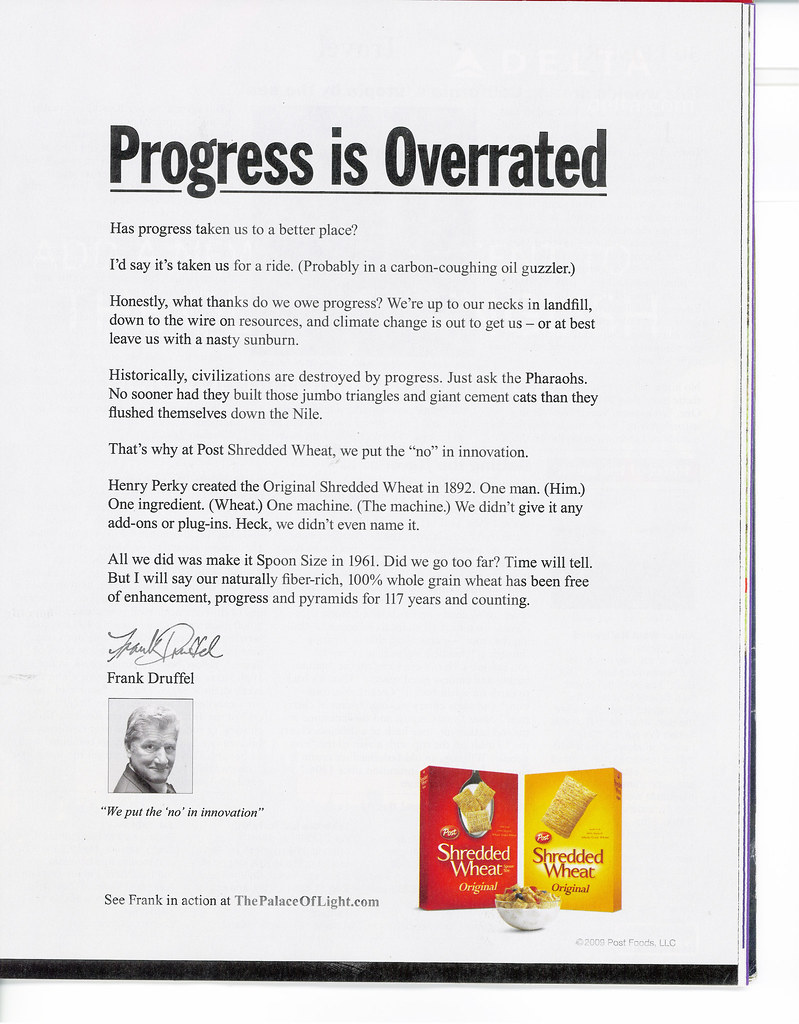Here’s an ad that I saw in the May 1, 2009 issue of The Week magazine. It’s from Post advertising their Shredded Wheat cereal with creative from Ogilvy:
Personally, I love it. Just as wrong-headed financial management is being righted in this economy, we can reclaim the oft-maligned word innovation to mean actual progress.
So where does real progress exist? It’s in between the innovation hucksters and those too reluctant to strive to make things better. I think Barry Curewitz, managing partner of Whole-Brain Brand Expansion, advocates for a rational, balanced approach to developing new products in his article, “Innovate with Balance.” due out in the May/June 2009 issue of Marketing Management magazine.
In summary, Barry argues two major points:
- His research shows companies are chasing too many strategies in a time when there’s too few resources, with identifiable shortcomings in the operations of otherwise good product ideas. In other words, in this time of tight budgets, invest wisely by supporting only what has potential, and then invest with real commitment. His examples of market performance for common household products demonstrates the point clearly.
- Companies can benefit by balancing structured, analytical methods with less structured, creative methods. We need the former to execute development plans, and we need the latter to create unique products, e.g. collaboration between MBA’s and creatives; coordination of innovation methods with Stage Gate methods.

Comments
2 responses to “We Put the ‘No’ in Innovation”
Victor, I too saw this earlier today & found it an amusing take on branding & differentiation by adding the intellectual spin and deeply embedding the concepts of Original, Tradition, Heritage.
I really like point #2. There needs to be a balance between both methodologies. Creativity & agility for great concept development, disciplined project management with critical review sessions (go, hold, kill) for execution and healthy pipeline throughput.
Victor,
I love this post!
Two very short responses to Curewitz points to be made:
1. Being conscious about how well you’re doing with your existing business/products, particularly when you’re considering new directions, is important no matter what the environment. You’re (almost) never changing the direction of one person, but many. That will always be more cruise ship than wave runner.
2. I hope he reverses the analytical with the creative element. Creativity should come first most of the time. That doesn’t mean that an analysis will illuminate a direction to which one can apply creativity. Still, I think that more often than not it’s better to take off the shackles of analysis for a short time and just seeing what ideas come up (read: creativity), THEN analyze to see what ideas work.
So often we see practitioners specializing in either the creative OR the analytical. How about people that can help insert an AND between those terms.
Thanks!
Chris